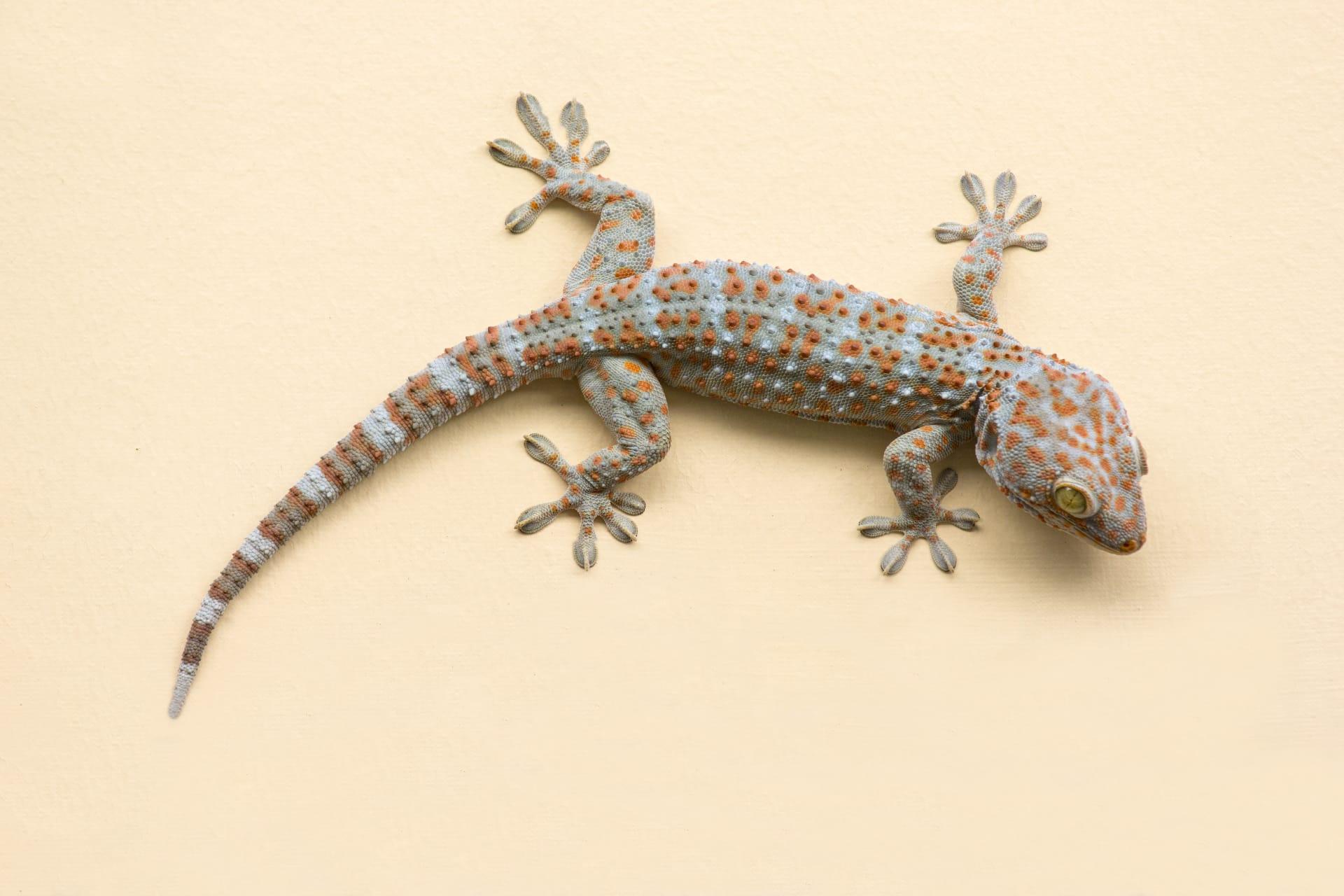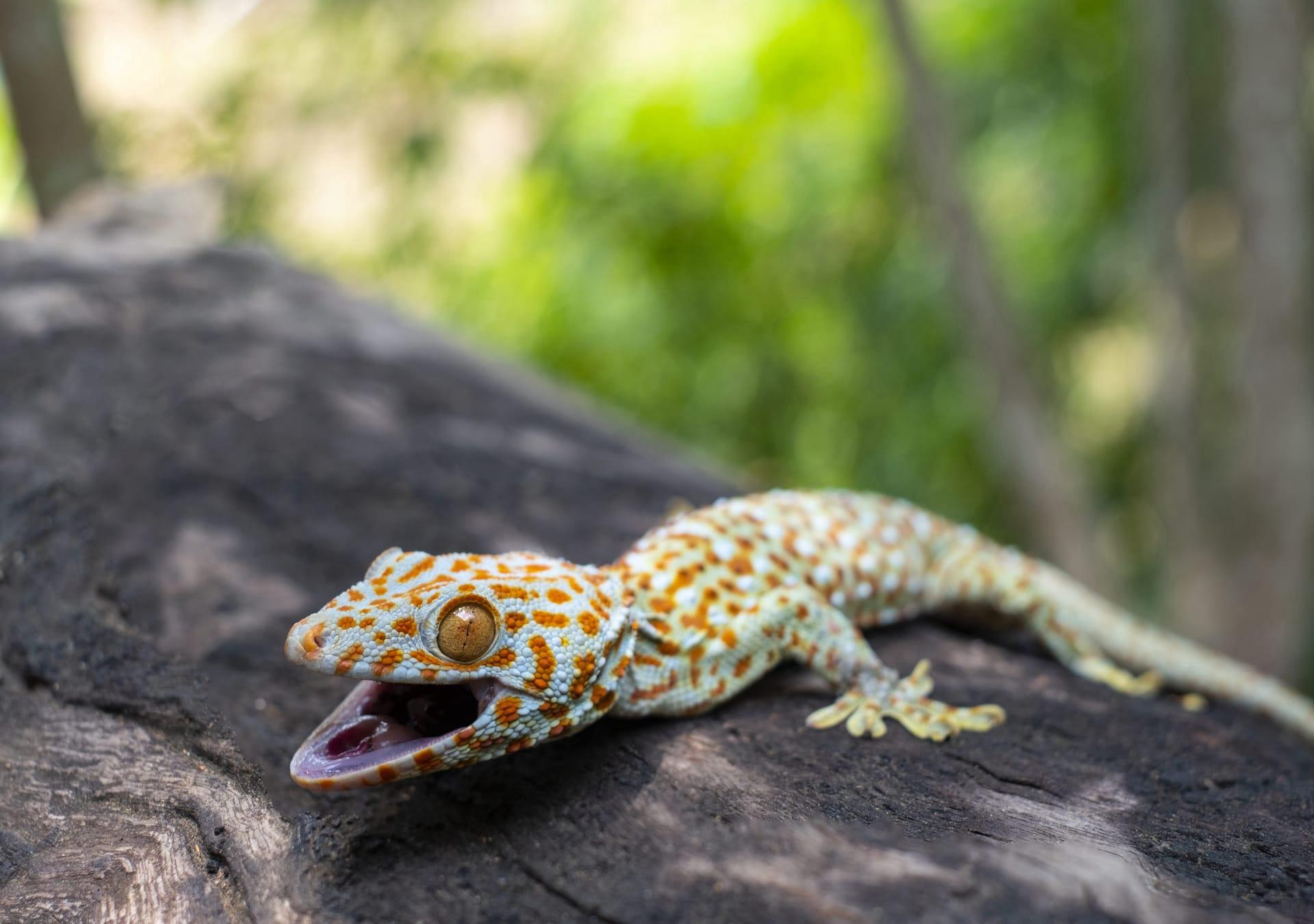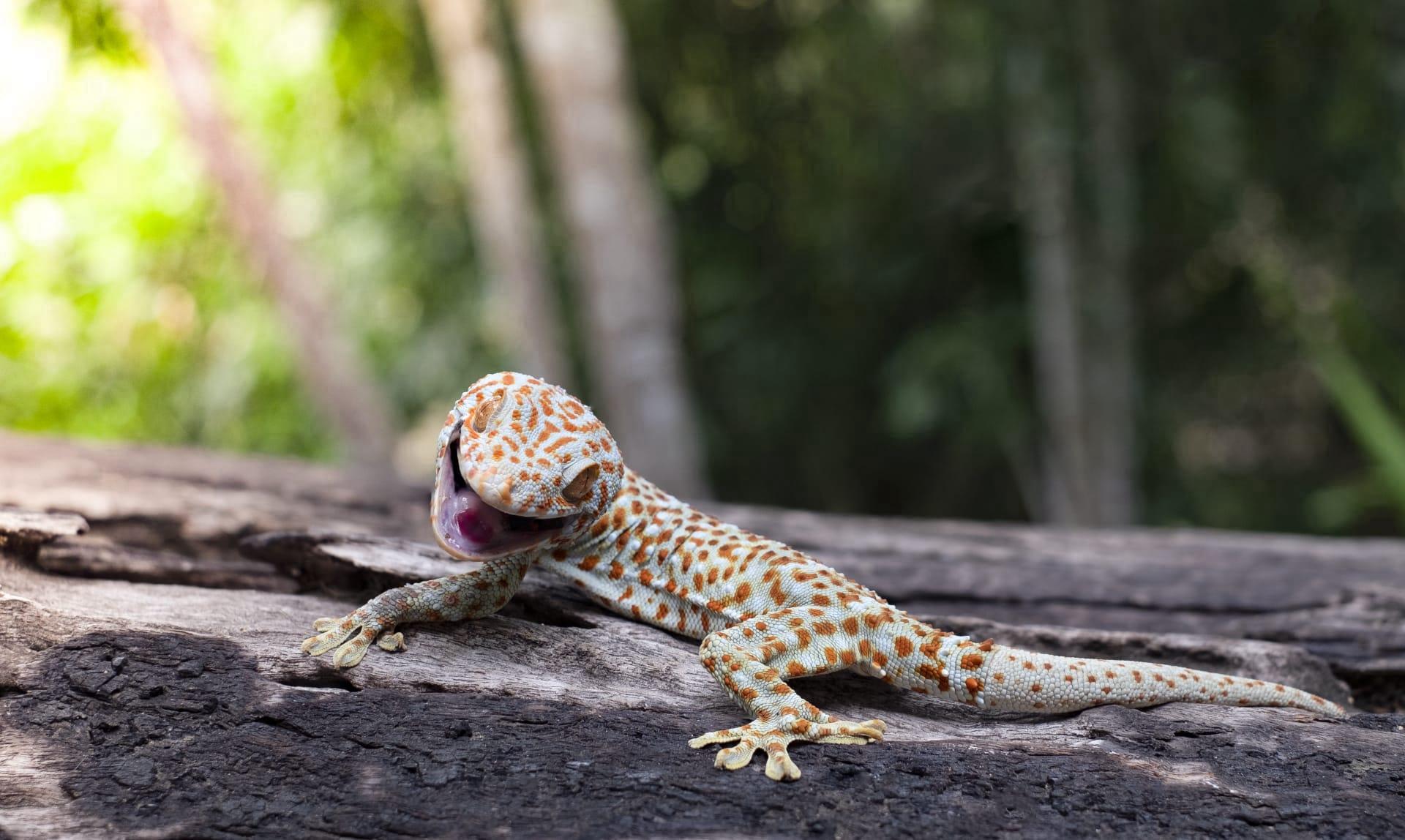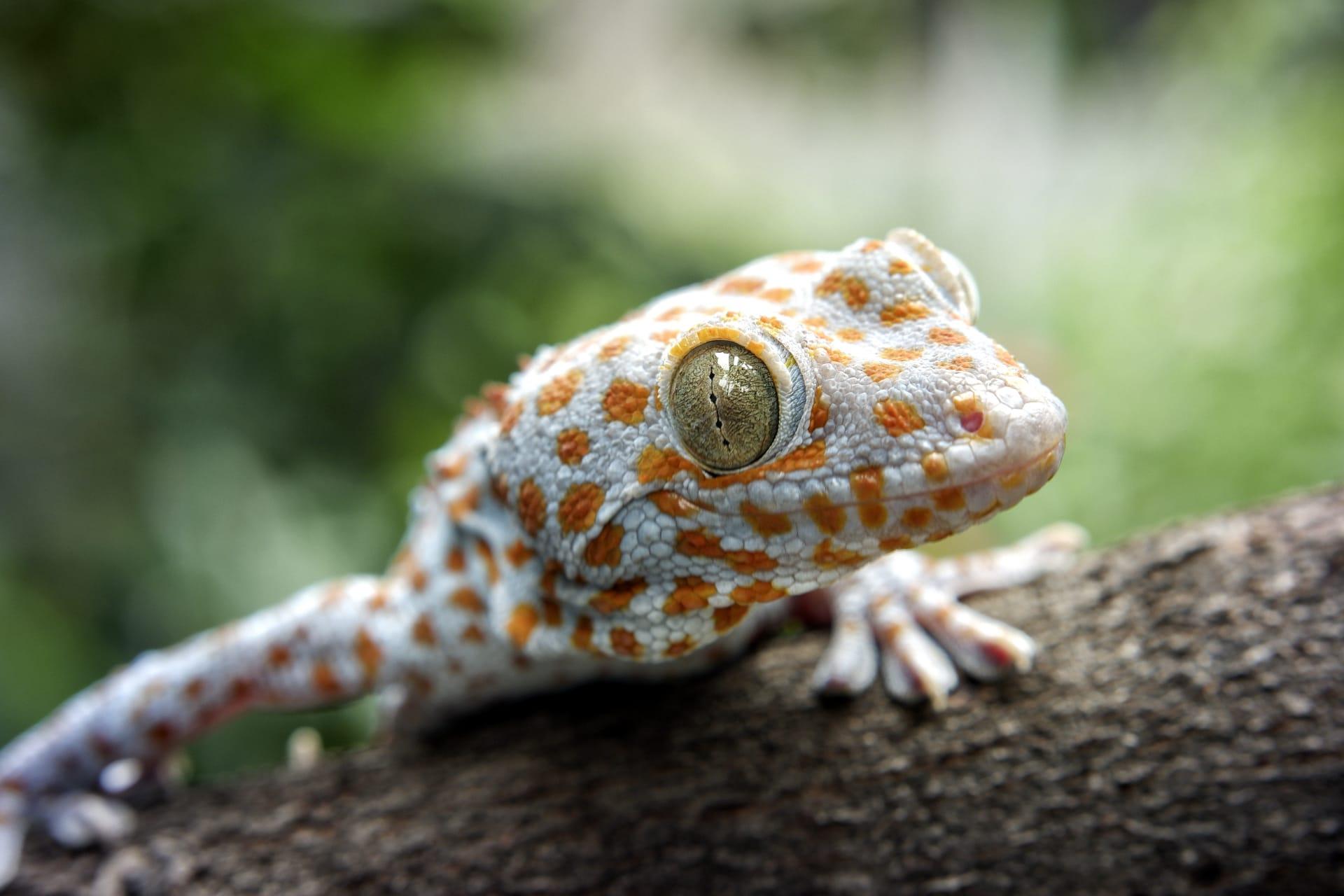Tokay Gecko Characteristics
- Home /
- Mini Encyclopedia /
- Animal /
- Tokay Gecko Characteristics
1
The Tokay Gecko, a fascinating creature, boasts a sturdy build, typically measuring about 12 to 15 inches in length. Its lifespan in the wild spans around 10 years, but with proper care in captivity, these geckos can live up to 20 years. One striking feature of the Tokay Gecko is its vibrant color palette, often displaying a mix of bright blue and orange-red spots against a grey to bluish body. This vivid coloration not only makes them visually captivating but also serves as a form of camouflage in their natural habitat.
One of the most remarkable organs of the Tokay Gecko is its foot. Each foot is equipped with hundreds of thousands of tiny hair-like structures called setae. These setae branch into even finer tips known as spatulae. This intricate design enables them to adhere to virtually any surface, including smooth, vertical walls or even ceilings. This adhesive ability is so strong that a single foot can support the entire weight of the gecko, allowing them to move with agility and precision in their arboreal environments.

2
Question: Why do Tokay Geckos make loud vocalizations?
Answer: The loud, barking call of the Tokay Gecko, often sounding like "To-kay! To-kay!", is not just distinctive but serves a crucial purpose. Males predominantly make these vocalizations to establish territory and attract females. The intensity and frequency of these calls increase during the breeding season. These vocalizations also act as a warning to other males, asserting dominance over their claimed area. This auditory display is an essential aspect of their social and reproductive behavior, reinforcing their presence and authority within their territory.

3
The movement of the Tokay Gecko is both swift and agile, a testament to their adaptation for tree-dwelling life. Their specialized feet allow them to navigate vertically with ease, swiftly climbing trees, walls, and even glass surfaces. This agility aids them in escaping predators and efficiently moving through their habitat in search of food or mates.
As predators, Tokay Geckos exhibit fascinating hunting behaviors. Primarily nocturnal, they hunt at night, feeding on a variety of insects, arachnids, and small vertebrates. Their hunting strategy is a blend of patience and precision, often waiting motionless for prey to come within range before striking with remarkable speed. Their strong jaws and sharp teeth enable them to grasp and subdue their prey effectively.

4
Tokay Geckos inhabit a range of environments across Southeast Asia and some Pacific Islands. They prefer warm, humid climates, typically found in rainforests, plantations, and even human dwellings. Their ability to adapt to various habitats, including urban areas, is a key factor in their widespread presence across these regions.
Reproduction in Tokay Geckos involves distinct behaviors and rituals. During the breeding season, males become more vocal and aggressive in attracting females. After mating, the female lays a clutch of one to two hard-shelled eggs, which she attaches to a protected surface like a tree trunk or a wall. These eggs are uniquely adhesive, ensuring they remain undisturbed during the incubation period. The female may guard the eggs until they hatch, which usually occurs after about two to three months.

5
Book: "The Secret Life of Geckos: Uncovering the Mysteries of the Tokay Gecko" by Dr. Sarah Greenway, published in the UK in 2015, delves into the behavioral and ecological aspects of Tokay Geckos. Dr. Greenway, a renowned herpetologist, provides insights into their social structure, communication methods, and adaptation mechanisms, making it a comprehensive guide for both enthusiasts and researchers.
Book: "Geckos of the World: A Journey Through Species" by Martin Hughes, released in the USA in 2018, offers a broader perspective, including a detailed chapter on Tokay Geckos. Hughes, an experienced wildlife biologist, explores the diversity and unique characteristics of various gecko species around the globe, with a focus on the Tokay Gecko's habitat, diet, and conservation status, enriched with vivid photographs and firsthand observations.